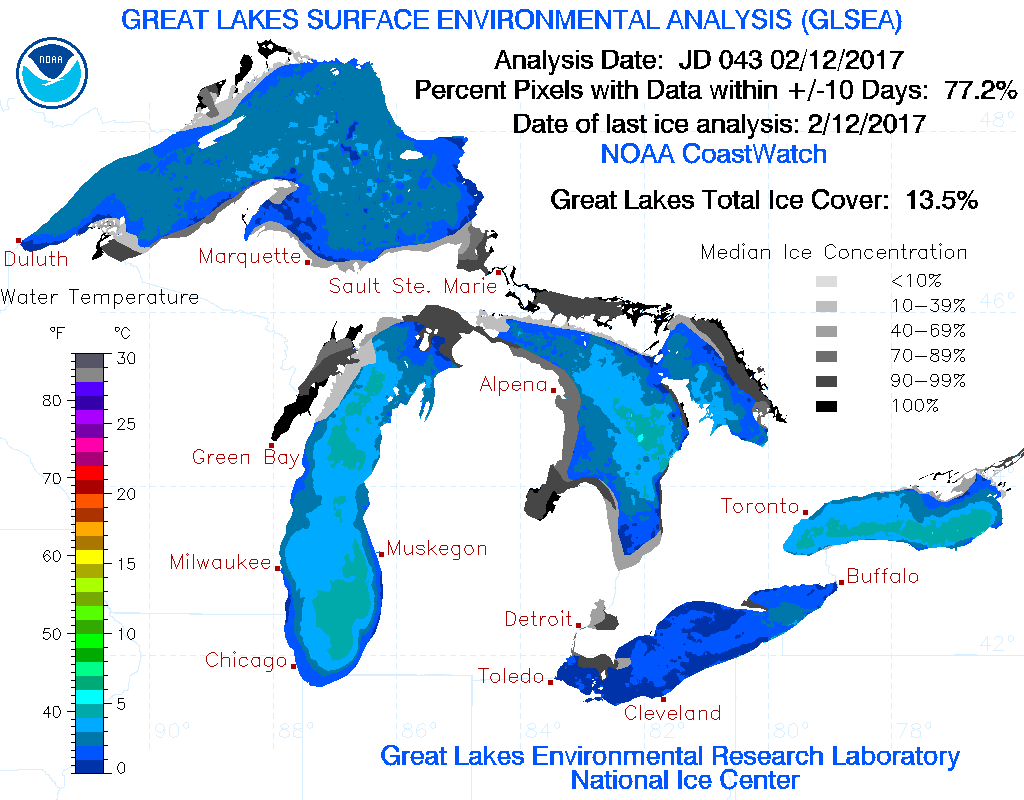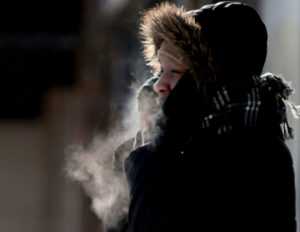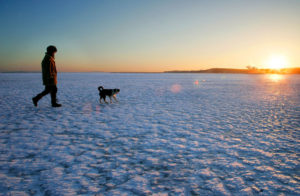National Oceanic and Atmospheric Administration (NOAA) monitors and reports on the ice coverage of the Great Lakes.
The average concentration of ice on Lake Superior is currently 5.7 percent, compared to 4.6 percent last year and 55.5 percent in 2015.
Lake Erie, the shallowest lake is currently at 14.3 percent ice coverage, compared to only 3 percent in 2016 and 95.2 percent in 2015. And finally, Lake Ontario ice coverage is 2.3 percent, compared to 0.4 percent in 2016 and 33.4 percent in 2015.
The density of liquid water depends on the water temperature. The density of water is highest at a temperature of about 40 degrees.
The density of the water near the surface increases and this surface water sinks because it is denser than the warmer water below.
Warmer water under the surface rises to replace this sinking water because of its smaller density. When all the lake water reaches a temperature of 40 degrees, further cooling of the surface water makes it colder than 40 degrees and, because it is now less dense than the water around it, it will float and continue to cool.
Once this surface water decreases to 32 degrees, the water freezes. The freezing then spreads downward into the lake and the ice thickens.
Freezing also first occurs along the shoreline, where the water is shallow. Before ice can form on the surface, the entire water column must first reach a temperature of 40 degrees, and this is likely to first occur along the shoreline.
Steve Ackerman and Jonathan Martin, professors in the UW-Madison department of atmospheric and oceanic sciences, are guests on WHA radio (970 AM) at 11:45 a.m. the last Monday of each month.





